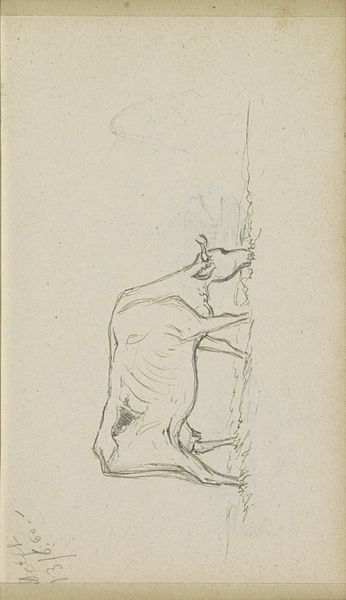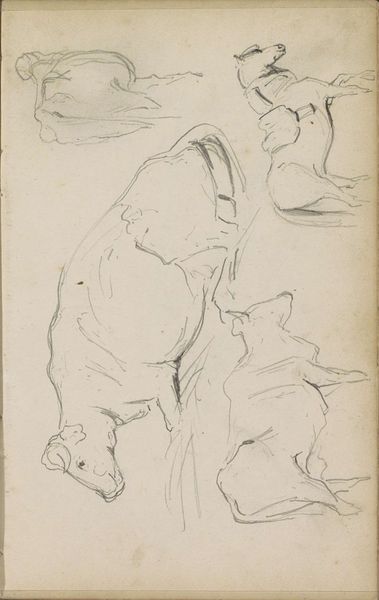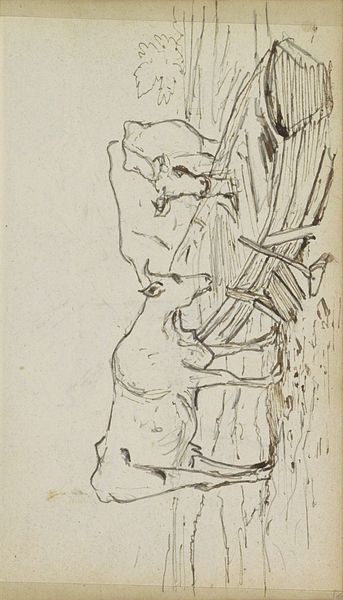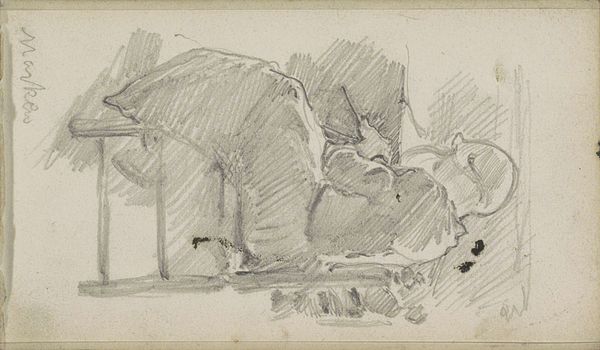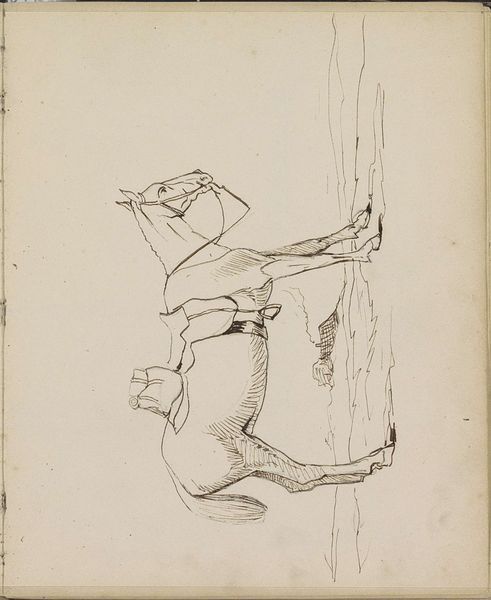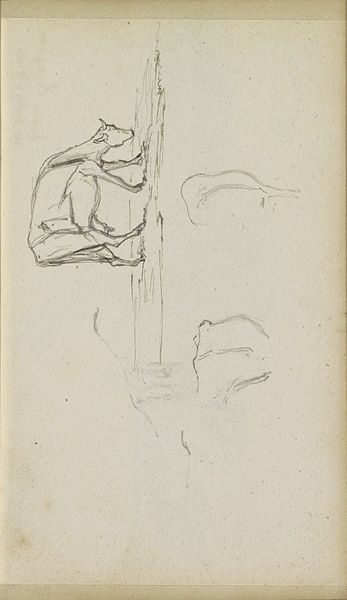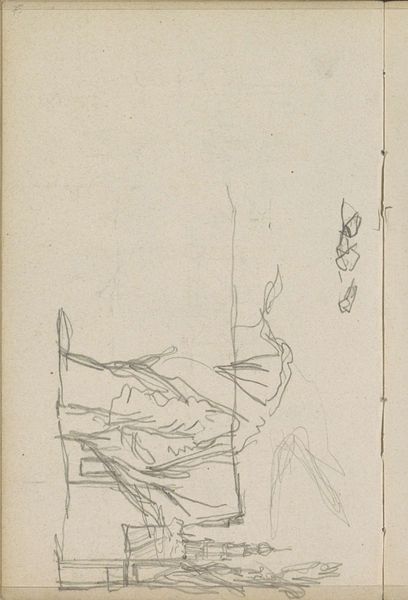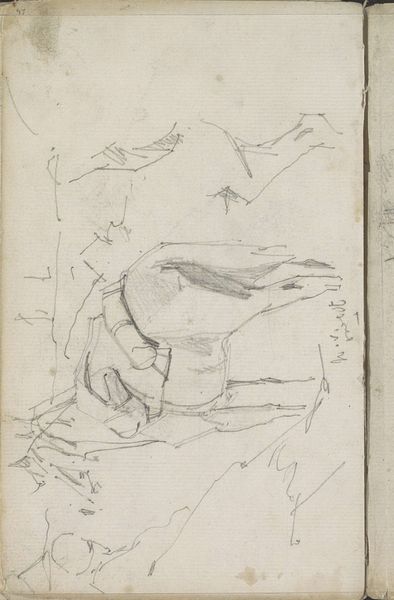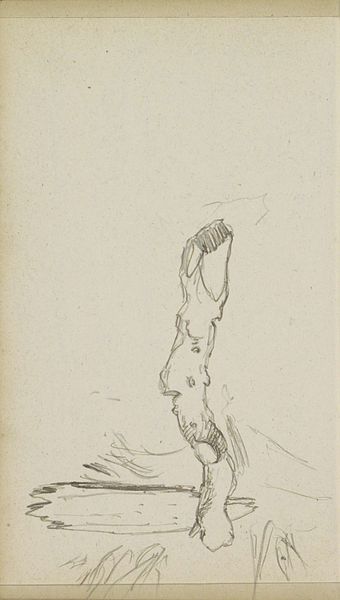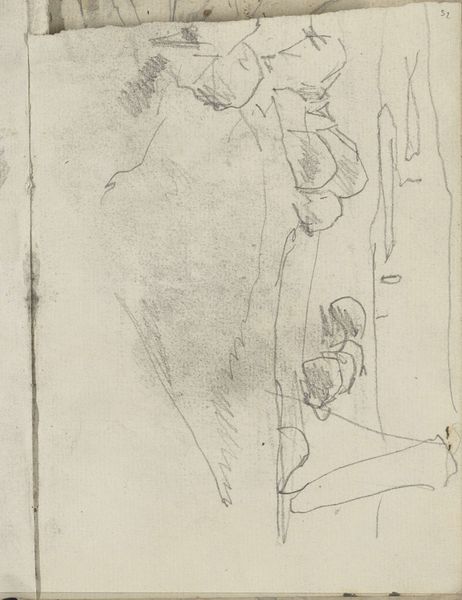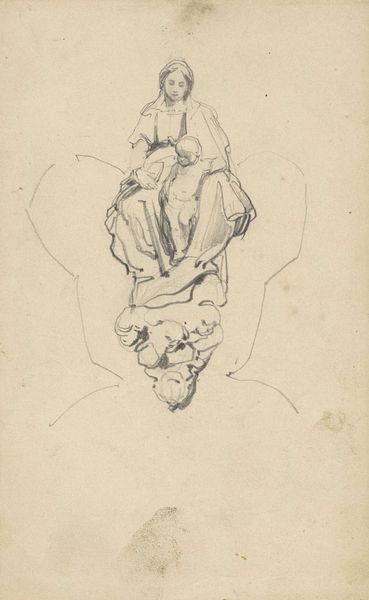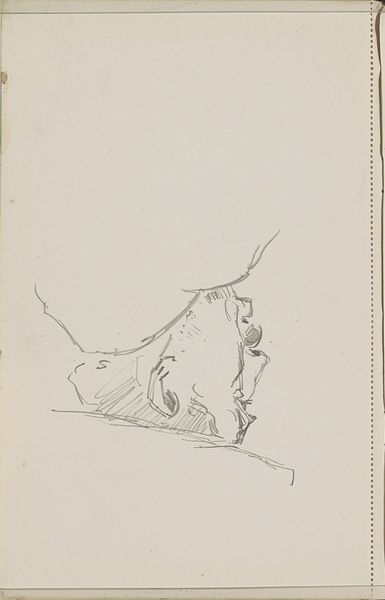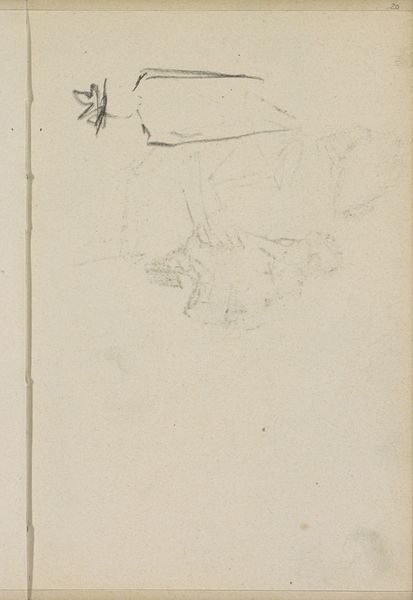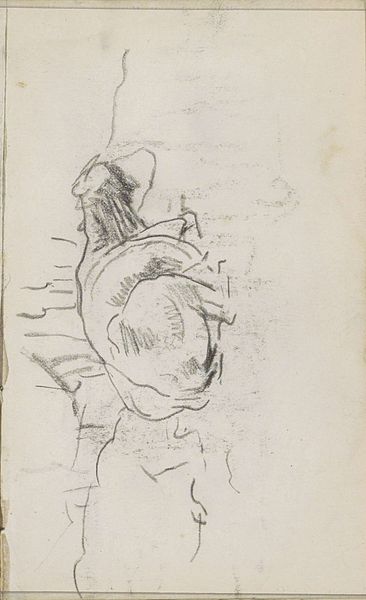
drawing, pencil
#
drawing
#
animal
#
landscape
#
pencil
#
horse
#
realism
Copyright: Rijks Museum: Open Domain
Editor: This is "Grazend paard in een weide," or "Grazing Horse in a Meadow," a pencil drawing by Johannes Tavenraat, made after 1854. The sketch is quite minimal. What strikes me most is the contrast between the focused detail on the horse and the much vaguer rendering of the landscape. How do you interpret this work? Curator: I see this piece as more than just a simple pastoral scene. Consider the date, the mid-19th century: rapid industrialization was transforming European society. Artists often turned to rural subjects to express nostalgia for a simpler, pre-industrial past. The horse itself can be seen as a symbol, not just of nature, but also of labor. Notice how the artist depicts it in a position suggesting work and sustenance. Editor: So you're saying that even in what appears to be a straightforward drawing of a horse, we can find social commentary? Curator: Precisely! Tavenraat's realism wasn’t just about replicating what he saw; it was about imbuing everyday subjects with deeper meaning. It’s worth asking ourselves, whose perspectives are prioritized in images like this? The land-owning gentry who idealize this rural scene, or those who work the land? Editor: That’s a compelling point. I hadn’t considered how landscape art, even seemingly simple sketches, could reflect power dynamics of the time. Curator: It encourages us to look critically at these idyllic portrayals and question whose stories are being told – and whose are being left out. It's a reminder that art is never truly neutral. Editor: I'll definitely carry this with me as I look at other pieces. Thanks for pointing out the undercurrents that aren't immediately apparent. Curator: My pleasure. Keep questioning, keep exploring, and never be afraid to challenge established narratives.
Comments
No comments
Be the first to comment and join the conversation on the ultimate creative platform.
